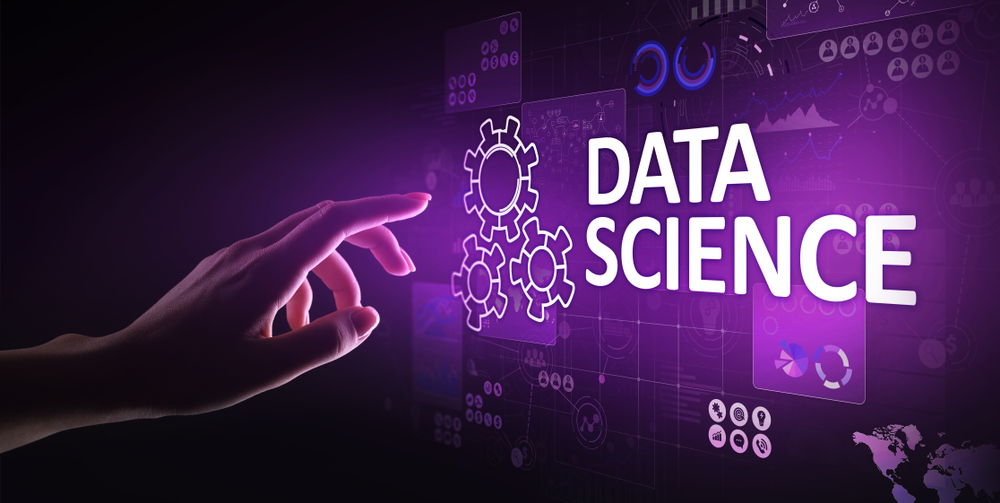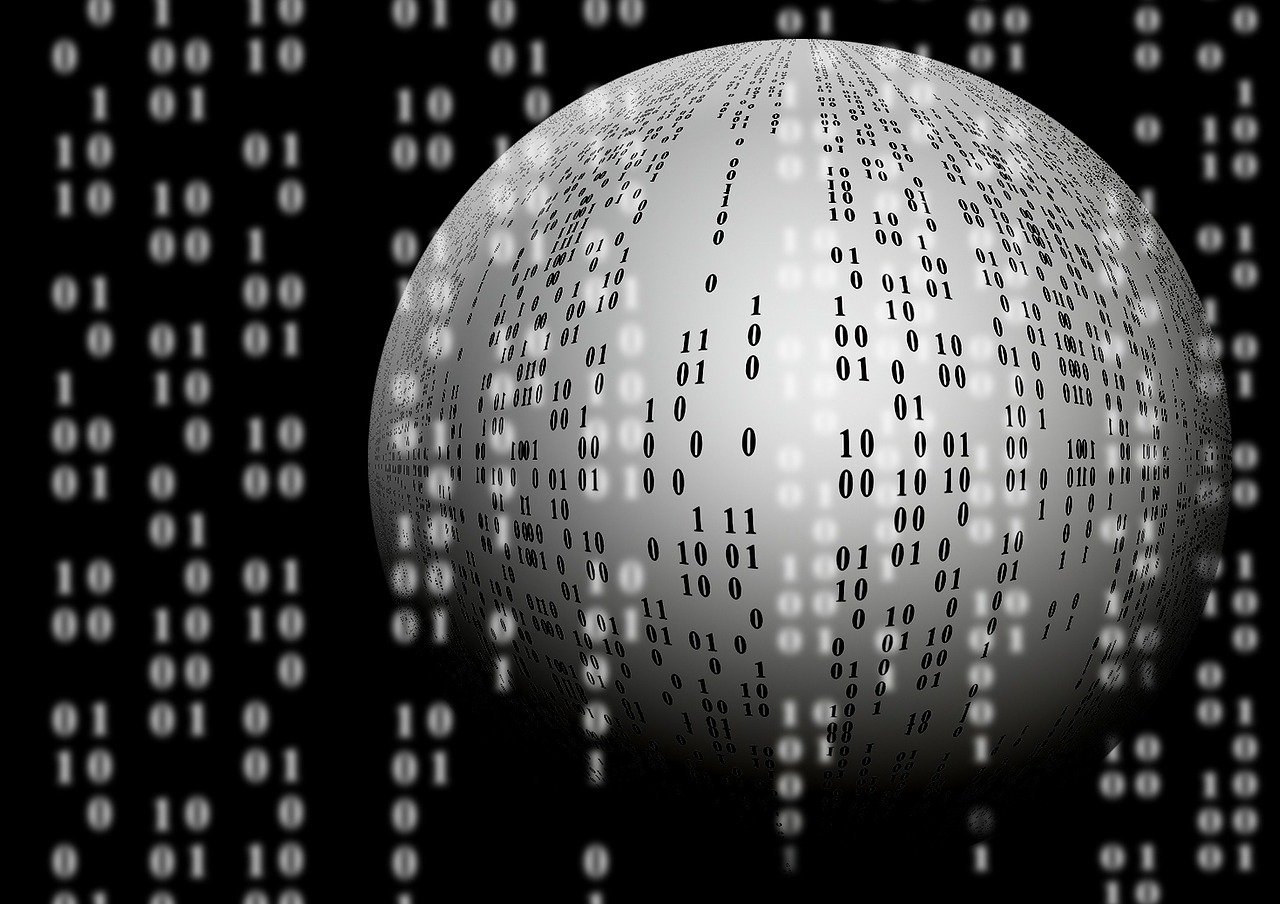- 1. Recommendation Engines
- 2. Market Basket Analysis
- 3. Warranty Analytics
- 4. Price Optimization
- 5. Inventory Management
- 6. Location of New Stores
- 7. Customer Sentiment Analysis
- 8. Healthcare
- 9. Gaming
- 10. Image Recognition
- 11. Logistics
- 12. Airline Route Planning
- 13. Augmented Reality
- 14. Merchandising
- 15. Lifetime Value Prediction
- Data Science Applications in Finance
- 8. Data Science Application in E-commerce Industry
- Conclusion
Data science is a rapidly growing field that combines statistics, computer science, and domain expertise to extract insights and knowledge from data. In this blog, we will explore various real-world applications of data science, including business, healthcare, finance, and more. Our goal is to provide readers with a better understanding of how data science is used to drive decision-making, improve operations, and solve complex problems across various industries. Join us as we delve into the world of data science and discover how this powerful tool can be used to make a real impact.
1. Recommendation Engines
Recommendation engines are the most important tools in a retailer’s arsenal. Retailers leverage these engines to drive a customer towards buying the product. Providing recommendations helps retailers increase sales and to dictate trends.
Sounds familiar? Thinking of Amazon and Netflix? That’s exactly how search recommendations work.
How do they do this?
Well, that’s simple, the engines are made up of complex machine learning components and deep learning algorithms. They are designed in such a way that they can keep a track record of every customer’s online behavior and analyze the patterns to suggest shows based on this data. Check out machine learning courses to understand more about recommendation Engines
That’s why every time Netflix recommends movies or TV series to you, it’s probably something you are going to watch! The same thing works with Amazon too, based on your past searches and purchase history, amazon provides recommendations and discounts on them as well. Because let’s face it, who can resist buying something that they always wanted, especially when it comes with a discount? This whole process involves a great deal of data filtering and analysis by machine learning algorithms.
2. Market Basket Analysis
This is one of the most traditional data analytics tools that retailers have profited from for years. Market basket analysis works on the concept- if a customer buys one group of items, they are more or less likely to buy another set of related items. For example, if you went to a restaurant and ordered starters or appetizers without any drinks, then you are more likely to order the main course or desserts. The set of items the customer purchases is known as an itemset, and the conditional probability that a customer will order the main course after starters are known as confidence.
In retail, customers purchase items based on impulse, and market basket analysis works on this principle by predicting the chances of a customer’s purchasing behaviour.
This mostly involves a lot of how the retailers do the marketing of the product, and in the world of e-commerce, customer data is the best place to look for potential buying impulses. Similar to search recommendations, market basket analysis also works with a machine learning or deep learning algorithm.
Learn about the differences between data science, machine learning, and artificial intelligence.
3. Warranty Analytics
Warranty data analytics helps retailers and manufacturers keep a check on their products, their lifetime, problems, returns and even to keep a check on any fraudulent activity. Warranty data analysis depends upon the estimation of failure distribution based on data that includes the age and number of returns and the age and number of surviving units in the field.
Retailers and manufacturers keep a check on how many units have been sold and among them how many have been returned due to issues. They also concentrate on detecting anomalies in warranty claims. This is an excellent way for retailers to turn warranty challenges into actionable insights.
4. Price Optimization
Selling a product at the right price, not just for the customer but also for the retailer or manufacturer is an important task. The price must not only include the costs to make the product but also the ability of a customer to pay for that product keeping in mind competitor prices as well.
All of this is calculated with the help of machine learning algorithms which analyze a series of parameters like the flexibility of prices, taking into consideration the location, buying attitudes of an individual customer, and competitor pricing. It then comes up with the optimal price that can benefit all the parties. This is a powerful tool for retailers to market their products in the right way with optimal pricing.
Learn all about What is Machine Learning.
5. Inventory Management
Inventory refers to the stocking of goods, for later use in times of crisis. Hence, inventory management is crucial for businesses to optimize resources and increase sales. Retailers need to manage inventories effectively so that even if there’s a sudden spike in sales, supply remains unaffected. In order to achieve that, the stock and supply chains are thoroughly analyzed.
Powerful machine learning algorithms analyze data between the elements and supply in great detail and detect patterns and correlations among purchases. The analyst then analyzes this data and comes up with a strategy to increase sales, confirm timely delivery and manage the inventory stock.
6. Location of New Stores
Location analysis is an important part of data analytics. Before a business can decide where to open up its business, it is crucial to analyze plausible business locations to settle on the best one.
The algorithm used in this case is simple, yet effective. The analyst analyzes the data giving importance to demographics. The coincidences in zip codes and locations give a basis for understanding the potential of the market. Competitor markets are also taken into consideration while analyzing locations. The algorithm also analyses retailer networks to come up with the most suitable option.
7. Customer Sentiment Analysis
Customer sentiment analysis has been around in the business world for a long time. But now, machine learning algorithms help simplify, automate and save a lot of time by giving accurate results.
Social media is the most readily and easily available tool for an analyst to perform customer sentiment analysis. He uses language processing to identify words bearing a negative or positive attitude of the customer towards the brand. This feedback helps businesses improve their product.
Read – What is Data Science?
8. Healthcare
Companies in the healthcare industry are embracing data science to create sophisticated medical equipment to diagnose and treat ailments.
9. Gaming
Data science is currently being used to assist produce video and computer games, which has advanced the gaming experience.
10. Image Recognition
One of the most common data science applications is detecting objects in photos and identifying patterns in images.
11. Logistics
Logistics organizations utilize data science to optimize routes to ensure faster product delivery and boost operational effectiveness.
12. Airline Route Planning
Data science has made it simpler for the airline industry to anticipate flight delays, which is assisting in its expansion. It also aids in deciding whether to make an intermediate stop or land at the destination immediately.
13. Augmented Reality
Last but not least, the final applications of data science seem to have the most promise for the future. For the best viewing experience, a virtual reality headset combines data, algorithms, and computing knowledge.
14. Merchandising
Merchandising is an essential part of any retail business. The idea is to come up with strategies that increase sales and promotions of the product.
Merchandising intends to influence customer decision-making via visual channels. While attractive packaging and branding retain customer attention and enhance the visual appearance, rotating merchandise helps to keep assortments fresh and new.
The merchandising algorithms go through data sets, picking up insights and forming priority sets of customers taking into account seasonality, relevancy, and trends.
Check how Data Science In FMCG course.
15. Lifetime Value Prediction
In retail, customer lifetime value is the total value of the customer’s profit to the company over the entire customer-business relationship. Particular attention is paid to the revenues, as far as they are not predictable by costs. By evaluating direct purchases, businesses can understand two significant customer lifetime methodologies; historical and predictive.
All the forecasts are made on the past data leading up to the most recent transactions. Usually, the algorithms collect, classify and clean the data concerning customer preferences, expenses, recent purchases, and behavior as the input. After the data is processed, a linear presentation of the existing and possible customer value is received. This algorithm also spots inter dependencies between the customer’s characteristics and their choices.
Data Science Applications in Finance
Finance is the motivation behind most businesses as everything from starting a business to expanding it further depends on it. This makes financial management a significant function in every industry, most importantly in the finance and banking industry. Financial management is very strongly bonded to data. Several operations in the financial domain may not be possible without data. The close connection between finance and data makes applications of data science in finance very crucial. Let us understand more about data science in finance.
Data science combines several disciplines in the process of using statistical and scientific methods on data to get insights. This information is useful for strategic decision-making in an organization. This process is iterative in nature and usually follows these steps – defining the problem, planning the process, collecting data, processing raw data to get it ready for analyses, performing the analyses, and then communicating the insights to the stakeholders.
With so much data available today and easy access to efficient computational power, data science in finance has been successfully implemented to open more doors to data-driven decision-making.
1. Risk Assessment and Management
There is a risk factor in every business which is crucial to assess so that it can be managed in time. In the finance sector, the risk assessment and management process involve measures from identification of risk to mitigating the uncertainty. Risks could be related to financial crises, payment defaulters, or any other operations in the ecosystem. Companies need to assess and manage risks to save resources, protect their brand or reduce their legal liability.
A lot of financial data is generated relating to credit card transactions, credit history, price fluctuations, trade data, and so on. Data science is used to study these data sets to understand the areas of concern and take the necessary steps to mitigate these risks. Data science allows the analysis of big data sets to give sufficient insights to risk managers.
The application of data science in finance helps risk managers in various domains including counterparty credit risk and anti-money laundering (AML). Defaults in transactions are not uncommon. Counterparties to a transaction may default before the final settlement. This is known as counterparty credit risk and data science is used to assess the risk before a transaction is initiated. Similarly, data science has found applications in AML. Money laundering is often associated with illegal activities and a cause of social problems. AML is implemented to comply with regulatory bodies and protect brand image, apart from moral obligations to society.
2. Fraud Detection and Prevention
Fraud in the financial industry relates to tax evasion, insurance claims, or identity theft. Tracking fraud possibilities and taking steps to minimize loss is a matter of priority for businesses. Continuous improvement in the application of data science in finance has resulted in more efficient systems that can detect the possibility of fraud much before its occurrence.
When big data is analyzed using data science, fraud detection is much more accurate and gives companies the ability to act against such crimes in real-time. For instance, unusual variance in credit card usage or banking transactions may flag them so that appropriate action may be taken. This helps the organization protect a customer as well as the company’s reputation and operation.
Fraud in insurance claims also can be detected with the help of data science. Data of past claims are explored and analyzed to understand patterns. This is used to spot possibilities of false claims.
Data science has improved the efficiency of fraud detection systems in financial organisations by reducing false positives, increasing the detection of actual fraud, and developing resources to manage that.
You can learn analytics in insurance to improve your insurance business. There are courses that will help you learn how to collect and analyse data, identify trends and opportunities, and to use that information to make better decisions for your business.
3. Real-Time Analytics
In financial business especially, time is of the essence. This makes real-time analytics equally or more important than historical data analytics. Data science tools such capability to organisations. This helps companies understand their existing customers better and enhance their brand experience and interaction with the brand properties. They get an opportunity to build better customer relationships and increase the chances of customer loyalty.
Since financial institutions have existed for decades, most of them have legacy systems. Digital transformation and financial data science applications bring the possibility of fully harnessing the power of data. Real-time analytics may help recommend a better product or service to the customer based on customer preference.
4. Predictive Consumer Analytics
At the core of the demand for predictive consumer, analysis is the need to respond to changing consumer behavior. Today, consumers are more empowered and aware of increased expectations. In order to positively respond to these customers, an organization needs insight into their preferences and lifestyle. A deeper understanding of the consumers helps an organization predict their future behavior and create relevant offers for them.
Data science tools enable predictive consumer analytics helping in increasing response rates, repeat customers, and profitability. Insights from these analyses also help improve their promotion campaigns’ performance. Campaigns curated with such insights are delivered to those consumers who are most likely to respond positively to offers. Campaign costs are also reduced with lesser and more focused recipients.
Insights also present an opportunity to prevent consumers from switching to a competitor. Their future actions can be predicted and responded to with suitable offers using these insights. They can also help gauge the lifetime values of customers.
5. Customer Data Management
In the current competitive business environment, customer data management is critical for the profitability of a business. Using data science, companies can understand almost anything about a consumer that is relevant to the business with big data analysis.
Organisations can now access consumer purchase behavior and demographics. This data can be analyzed to understand market trends and gauge consumer behavior. Customer data management gives a holistic view of consumer behavior and helps in making data-driven decisions.
Proper implementation of customer data management can considerably improve customer retention and satisfaction leading to higher profitability. Financial institutions benefit the most by analyzing the current customer data and data of customers at the bottom of the funnel. Customers with higher lifetime value (CLV) may be managed separately for better monetary growth.
6. Delivering Customized Services
Delivering customized services while keeping customers’ needs in mind is an effective customer acquisition and retention strategy. Customer satisfaction and loyalty levels differentiate companies from their competitors. Personalized services are not new, but their implementation has been continuously evolving.
Companies use historical customer data and feedback in the finance industry to deliver more suitable financial services. Banks and other financial institutions integrate operational data with customer data across all channels and divisions of the company to enhance the customer experience at all touchpoints.
Data science tools are used to analyze historical data and create a 360-degree view of a customer. The comprehensive data and insights derived from them are at the core of all personalization services. There has been a gradual shift in the customer journey in the banking and financial services industry. With a decrease in face-to-face interactions, multi-touch attribution models fill the gap and help in understanding consumers better.
7. Algorithmic Stock Trading
Algorithmic stock trading refers to the automated setup using complex mathematical formulas for buying and selling shares. Data science predictive models are used in stock trading. These models use historical data to predict future events in the stock markets.
Investors and traders incorporate various trading strategies to maximize returns on their stock investments. They use economic data, company data, and the latest news about the company to gauge the growth rate of the stocks. Fund managers try to project the stock prices and trade on that basis.
Algorithmic data science-based trading leverages the computational power and availability of data. It also accounts for variables like time, volume, and price of stocks. The Piotroski algorithm is one such strategy that is used to assess the strength of a company based on the Piotroski F-Score, a number between 0 and 9.
Algorithmic trading has been allowed in India since 2008 and over 30% of trade is done using algorithms already. While data science and machine learning are driving the change in this sector, there is still a long way to go.
8. Data Science Application in E-commerce Industry
The importance of data in today’s world has reached new heights, where companies are relying on data sets to understand performances and arrive at business decisions.
Data analysis is especially relevant in the e-commerce and retail industry. They can predict the purchases, profits, and losses, and even manipulate customers into buying things by tracking their behavior. Retail brands analyze data to create customer profiles, learn sore points, and market their product accordingly to push the customer towards purchasing.
Take up the data science courses and learn the required skills for you to build your data science career.
Learn all about data science skills studies of 2023 here.
Conclusion
This comes to the end of the blog ” data science applications”. Data science along with machine learning has been evolving and helping companies automate their operational processes and improve the value proposition they can offer to their customers while enhancing their bottom line.
Decision-making for solving business problems has reaped the best results when backed by data. You, too, can become a data-driven decision-maker by learning from world-renowned MIT Faculty via two top-rated programs, The Applied Data Science Program by MIT Professional Education and Data Science and Machine Learning: Making Data-Driven Decisions by MIT IDSS. The programs, with curriculum’s designed by MIT faculty, are complemented by mentored learning sessions with industry experts that will allow you to solve real-life business problems and build a portfolio with the latest data science and machine learning skills. This will also help you earn a data science professional certificate from one of the most renowned universities in the world.
Finding the right data science course can be overwhelming. With so many options available, it’s hard to know where to start. That’s why Great Learning Academy has put together a list of free data science courses to help you get started on your data science journey. Whether you’re looking for an introduction to data science or a more advanced course, we’ve got you covered.
Data Exploration and visualization, Data Preprocessing, Data Modeling
Data science is used in a wide range of industries and fields, including business, finance, healthcare, government, technology, and retail. It is commonly used for tasks such as predictive modeling, customer analysis, fraud detection, and process optimization.
Data science is important for the future as it enables businesses and organizations to make better decisions, automate processes, and improve predictions and forecasts by understanding and leveraging large amounts of data. It is also a key driver of technological advancements in fields such as AI, automation and IoT, making it crucial for staying competitive in an increasingly digital world.
Data science can provide many benefits, including improved decision making, increased efficiency, cost savings, new revenue opportunities, and a deeper understanding of customers, markets and operations.
Data science can be used to solve a wide range of problems, including predictive modeling, identifying patterns and insights in large data sets, optimizing business processes, automating repetitive tasks, and improving machine learning models.









